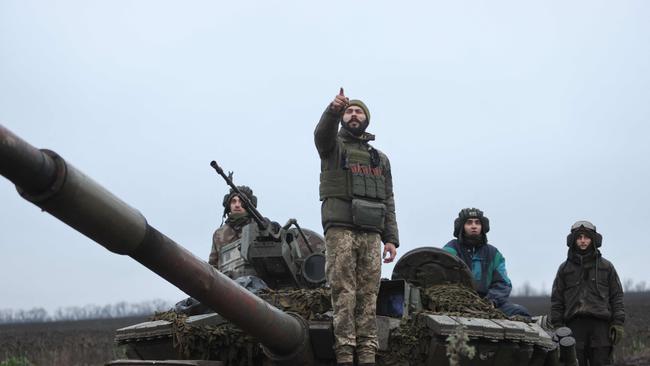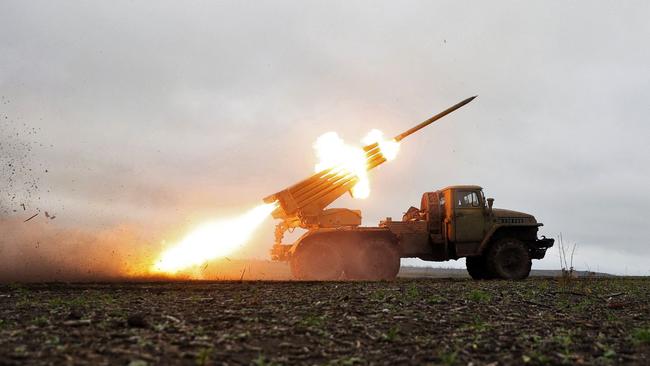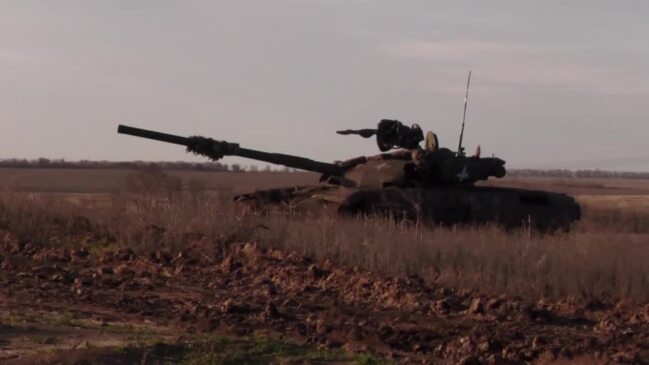Ukraine’s fate rests on a relentless arms race

The fact is that the invasion, which under the Putin blueprint should have been done and dusted in seven days, has ushered in a new era of industrial warfare, a test of the capacity of Russia and the West to speed up the production lines of their arms factories.
Last summer in the Donbas the Ukrainians were firing 6-7,000 artillery rounds a day, still only a fraction of the firepower deployed by the Russians. Yet the US produces only 15,000 rounds each month. So of course Nato stockpiles are melting away as the shells, ammunition and heavy equipment get shifted across the Polish and Slovakian borders into Ukraine.
That is already becoming a global concern. Arms promised to Taiwan, which has its own very big reason to be nervous, have been delayed. Is the western alliance financially stable enough, and does it have the political will, to become an arsenal for democracy?

The war on terror, launched after 9/11, made very different demands of the arms industry. It brought with it smart technology, precision weaponry, drones, close air support, a new generation of military vehicles that could survive roadside explosives. High-intensity conventional war seemed very 20th century. The result was a lack of industrial preparation for attritional warfare, what German First World War generals called Materialschlacht. So Ukraine has come as a shock. “A day in Ukraine is a month or more in Afghanistan,” one former Nato official said recently, referring to the comparative levels of bombardment.
The fogginess surrounding casualty figures masked the problem in the first few months of the invasion. The Russians kept their stats secret and then played them down, to deny political space for an oppositionist anti-war movement. The Ukrainians hid the numbers of military dead, published only civilian casualties and perhaps overstated the number of Russians they had killed. US intelligence estimates from March to November suggest around 100,000 military casualties (dead and critically wounded) for the Ukrainians, more than 100,000 for the Russians. These are vague estimates, calculated for example on the basis of Russian obituaries, but they do suggest numbers significantly less than, say, the First World War (on the opening day of the Somme alone 57,000 British soldiers were killed and wounded).
But ammunition use does not always translate into killing and maiming, and western pacifists shouldn’t flinch from supplying it. Nor should they mark down the Ukrainians as trigger-happy. There have been in this war many episodes of intense fire that were simply aimed at suppressing the fire of the enemy. Some of it was covering fire to shield a small advance. Artillery barrages are designed not so much to destroy the enemy as to bring him so much psychological distress as to break his will to fight. The Ukrainian counteroffensive against Russian troops in the northeast Kharkiv region was an example of that: a rout.

It was certainly what prompted Putin to shake up his defence industry in September and put plants on a 24-hour, three-shift cycle. It was, he had finally understood, going to be an arms race with the West. In part it was a recognition of his own failures as a commander. For two years before launching war in 1939, Hitler demanded briefings on ammunition stocks, put pressure on the procurement office and expanded the Wehrmacht’s share of critical raw materials. Putin, though a follow-up to his 2014 land-grab of Crimea was always on the cards, hadn’t done the necessary spadework to make a quick transition to a war economy. He was counting on a short blitzkrieg, the collapse of what he saw as an enfeebled government in Kyiv and the unpreparedness of Nato to rally in support of a non-Nato member.

Now he is taking another gamble and this time he may have got it right. Although rattled EU countries are investing hugely in national defence industries, they are short of the raw materials needed for weapons manufacture. The cellulose needed for producing gunpowder, synthetic rubber and various key chemicals - all have to be imported and prices are soaring. You can’t produce ballistic-resistant vests without materials supplied by China, an obvious vulnerability. Aluminium, platinum, palladium and rhodium were all essential materials for weaponry and all imported from Russia. Now alternative sources are needed - and it is eating up funds. The combination of backfilling Nato armouries and keeping up a flow of weaponry to Ukraine is exposing huge flaws in the defence of the West.
Fundamental improvements are needed if the West is going to show it is capable of fighting a sustained full-blown war - increased industrial co-operation between allies, standardising weapons systems, building up stockpiles at a faster rate. This is an arms race we have to win if Nato is to retain any credibility in the future.






Film footage from the muddy trenches along the 250 miles of the Ukrainian front line in Donbas evokes Passchendaele and the Somme. It’s not just the cold, soggy soldiery but the surrounding burnt out, skeletal trees; the tell-tale signs of relentless artillery bombardment. Hundreds of thousands of tonnes of explosives have been expended in the nine months since Russia invaded and the result has been a barely acknowledged ammunition crisis for Nato, for Russia and of course for Ukraine. Unless this is addressed quickly, pressure will build for a ceasefire that will tilt the balance of advantage against Kyiv.